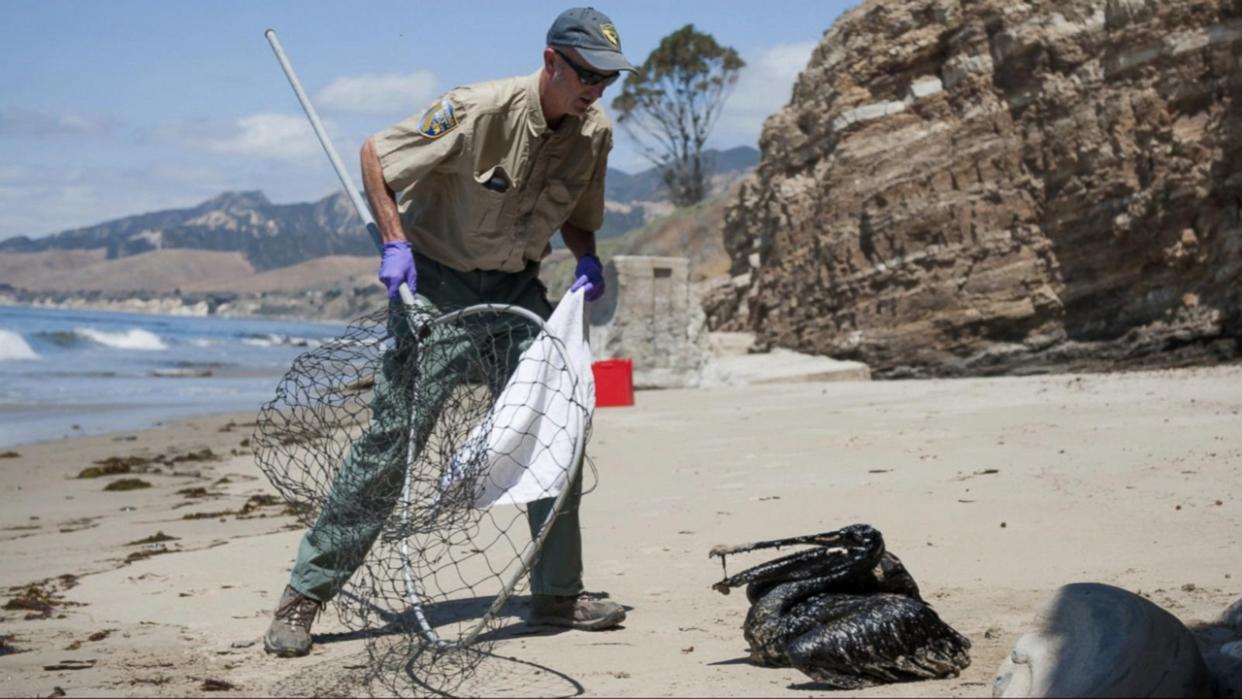California oil spill: Plains All American Pipeline’s reported history of safety violations

All eyes are on Plains All American Pipeline now that cleanup teams are working around the clock to curb the environmental damage caused by the massive crude petroleum spill in California earlier this week.
The rupture on Tuesday caused 105,000 gallons of oil to spew onto a Santa Barbara beach and its offshore waters. That is five times the Houston-based company’s initial estimate for the “worst-case scenario.”
By late Thursday, responders had retrieved a mere fraction — about 9,000 gallons — of the spill that tarnished 9 miles of a scenic stretch along the Golden Coast.
Environmentalists are directing their anger at Plains for failing to prevent such a disaster, particularly in light of what they consider frequent red flags: a history of federal safety infractions.

Plains was cited for 10 crude oil spills between June 2004 and September 2007 in Texas, Louisiana, Oklahoma and Kansas — resulting in a $3.25 million civil penalty in 2010.
In 2010, the Environmental Protection Agency (EPA) announced that Plains had agreed to spend about $41 million to upgrade 10,420 miles of its pipeline, resolving its Clean Water Act violations.
Since 2006, the Los Angeles Times reports, Plains has racked up 175 violations of safety and maintenance codes; an analysis of federal records revealed that the company’s rate of incidents per mile of pipe was more than three times the national average.
These breaches include “pump failure, equipment malfunction, pipeline corrosion and operator error,” according to the newspaper.
In April 2011, a pipeline operated by Plains Midstream Canada, a subsidiary of Plains, burst open in Alberta’s boreal forest, spilling 28,000 barrels of oil into pools of still water. The line had already suffered a rupture in 2006.
A year ago, in May 2014, Plains was responsible for 10,000 gallons spilling from a broken pipe into the streets of Los Angeles.
A representative from Plains was not available to comment on this information when contacted by Yahoo News.
The response effort underway in California involves Plains and governmental agencies: the Coast Guard, the EPA, the Santa Barbara Office of Emergency Management and California’s Department of Fish and Wildlife.
Mary Fricke, an information officer with the department’s Office of Spill Prevention and Response, said there are nearly 300 responders from the local, state and federal levels working on this spill.
“Now we have highly trained volunteers with our wildlife care up and down the state who were deployed when we learned about it,” Fricke said in an interview with Yahoo News. “They are out there capturing oiled birds so they can rehabilitate them and transport them.”

The Department of Fish and Wildlife has designated several areas throughout the state as “sensitive sites” because of their endangered plant and animal life.
“The spill is near a sensitive site, and we are aware of it,” Fricke said. “We have our teams out there, and we are strategizing.”
The ruptured pipeline, which was constructed in 1987, runs from Las Flores to Gaviota.
It is still too early to properly estimate the cost of the response effort, according to Plains.
California Gov. Jerry Brown has declared a state of emergency for Santa Barbara County because of the spill.
“This emergency proclamation cuts red tape and helps the state quickly mobilize all available resources,” Brown said. “We will do everything necessary to protect California’s coastline.”
Oil spills cause immediate and long-term harm to ecosystems in many ways by suffocating wildlife, reducing animal and plant reproduction, and contaminating food sources and nesting habitats.
The harm can last for years even if the oil was in the environment for only a relatively short period.
Related video:



